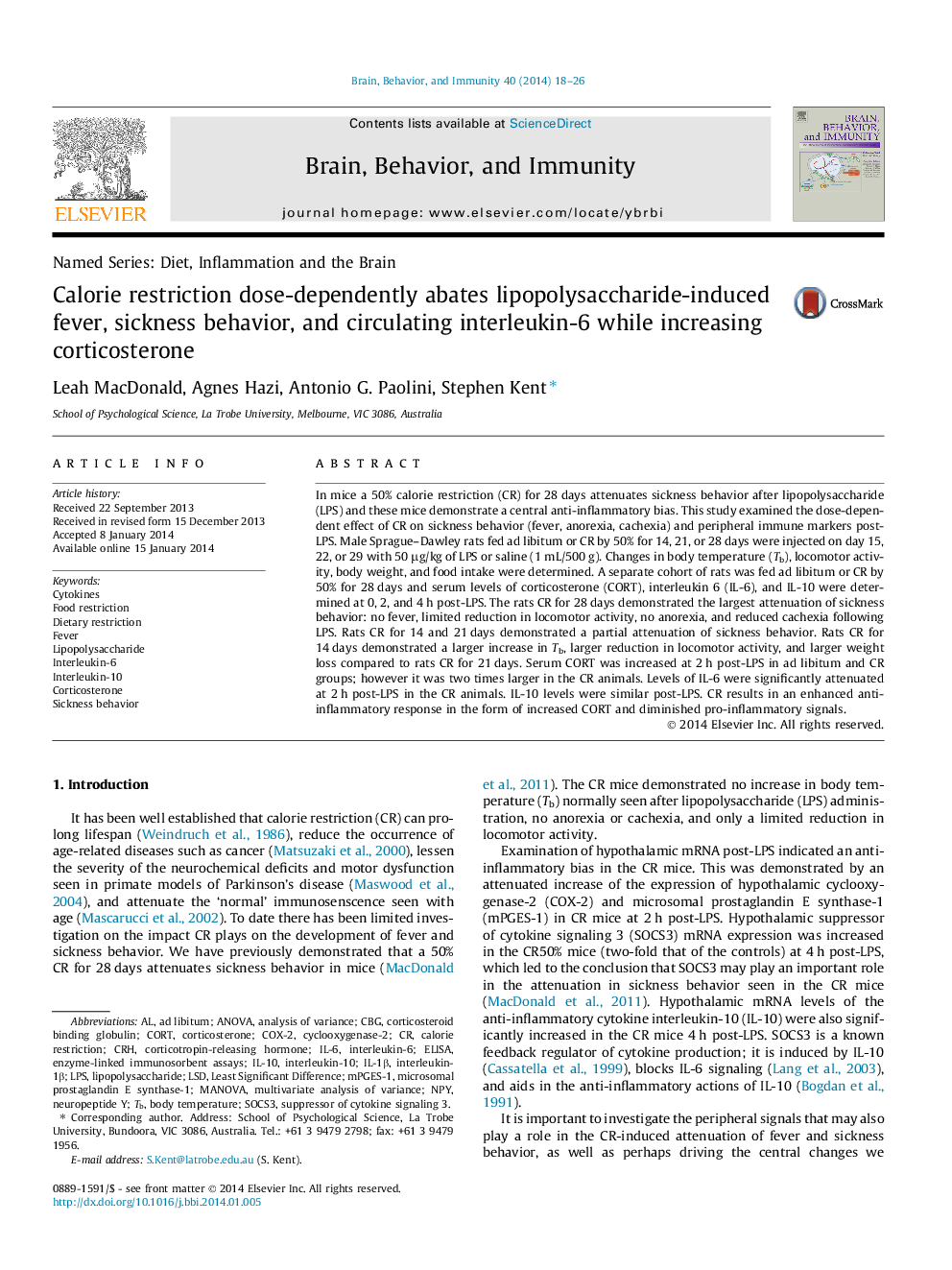| Article ID | Journal | Published Year | Pages | File Type |
|---|---|---|---|---|
| 921960 | Brain, Behavior, and Immunity | 2014 | 9 Pages |
•CR blocked LPS-induced fever, sickness behavior, and plasma IL-6; Enhanced the increase in CORT without changing IL-10.
In mice a 50% calorie restriction (CR) for 28 days attenuates sickness behavior after lipopolysaccharide (LPS) and these mice demonstrate a central anti-inflammatory bias. This study examined the dose-dependent effect of CR on sickness behavior (fever, anorexia, cachexia) and peripheral immune markers post-LPS. Male Sprague–Dawley rats fed ad libitum or CR by 50% for 14, 21, or 28 days were injected on day 15, 22, or 29 with 50 μg/kg of LPS or saline (1 mL/500 g). Changes in body temperature (Tb), locomotor activity, body weight, and food intake were determined. A separate cohort of rats was fed ad libitum or CR by 50% for 28 days and serum levels of corticosterone (CORT), interleukin 6 (IL-6), and IL-10 were determined at 0, 2, and 4 h post-LPS. The rats CR for 28 days demonstrated the largest attenuation of sickness behavior: no fever, limited reduction in locomotor activity, no anorexia, and reduced cachexia following LPS. Rats CR for 14 and 21 days demonstrated a partial attenuation of sickness behavior. Rats CR for 14 days demonstrated a larger increase in Tb, larger reduction in locomotor activity, and larger weight loss compared to rats CR for 21 days. Serum CORT was increased at 2 h post-LPS in ad libitum and CR groups; however it was two times larger in the CR animals. Levels of IL-6 were significantly attenuated at 2 h post-LPS in the CR animals. IL-10 levels were similar post-LPS. CR results in an enhanced anti-inflammatory response in the form of increased CORT and diminished pro-inflammatory signals.
